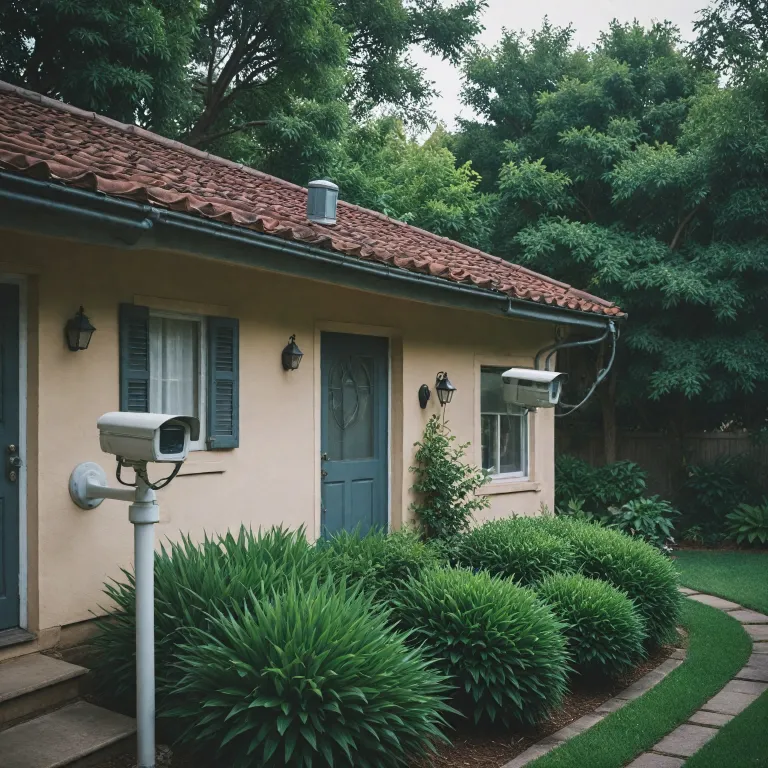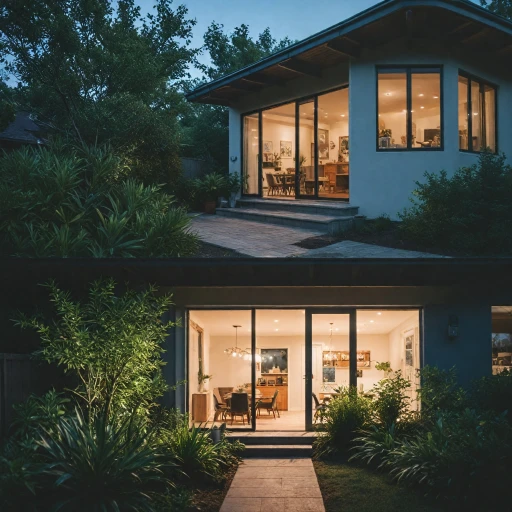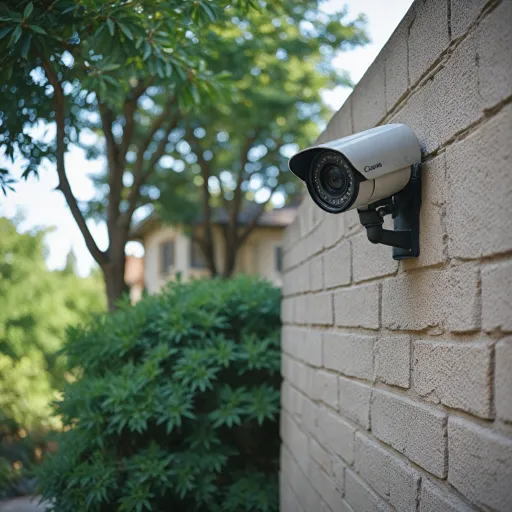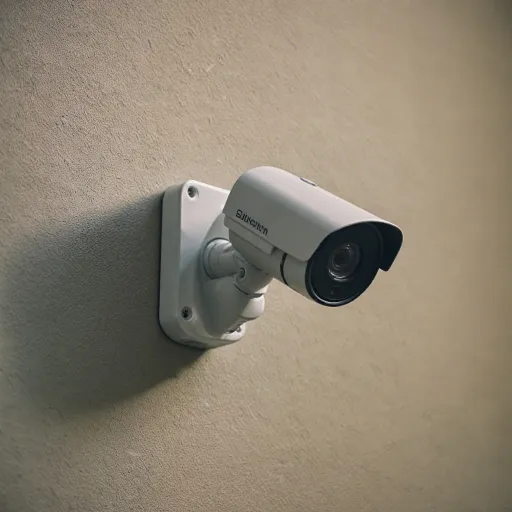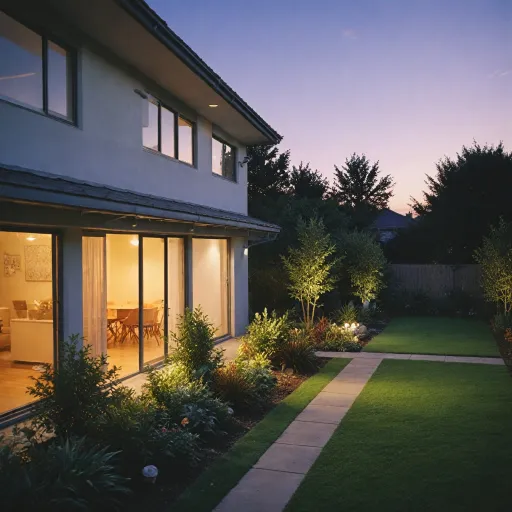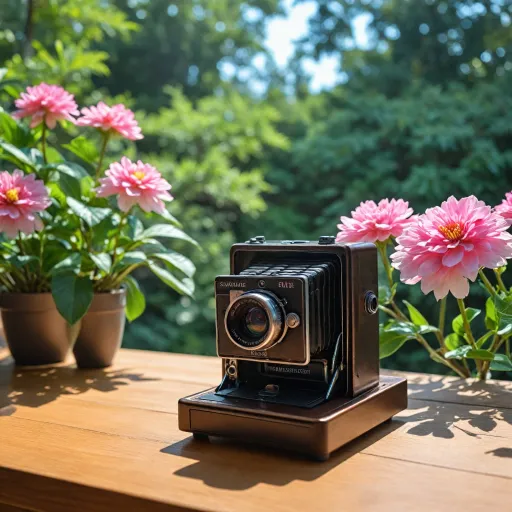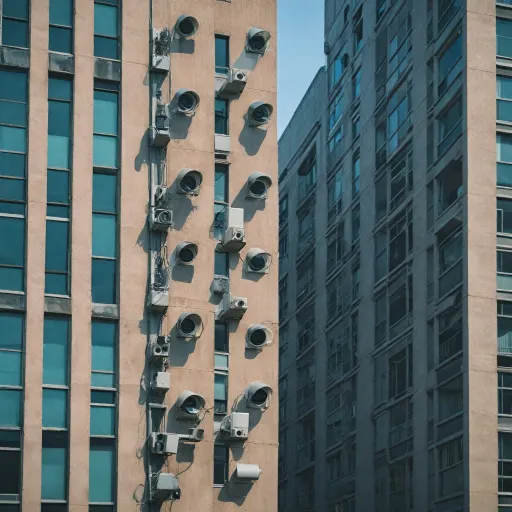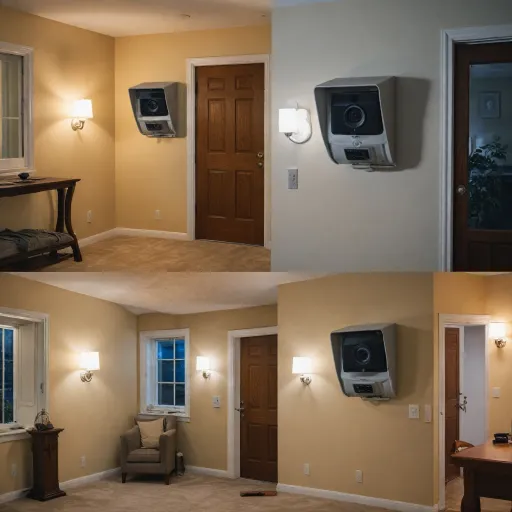
Understanding Different Types of Security Cameras
Exploring Various Security Camera Options
When it comes to selecting the right home security cameras, understanding the different types of options available is crucial for making informed decisions. Each type of camera has its unique advantages, and choosing the right one depends on your specific needs and circumstances.
Here are some common types of security cameras you might consider for your home:
- Wired Cameras: Known for providing a stable and reliable connection, wired cameras are connected directly to your home’s electrical system or via ethernet cables. They are often viewed as a more permanent solution, offering high definition video quality and excellent night vision capabilities. Their setup may require professional installation, which might add to the initial cost.
- Wireless Cameras: These cameras connect to your home Wi-Fi network, eliminating the need for extensive wiring. While they offer greater flexibility in installation, it is essential to ensure a strong wireless signal to prevent disruptions.
- Digital Wireless Cameras: Unlike traditional wireless cameras, digital wireless options send high-definition video signals through a digital network. This reduces interference and often provides better resolution, which is especially helpful in picking out small details on the security feed.
- Outdoor Cameras: Designed with waterproof and heavy-duty construction, outdoor cameras are built to withstand weather extremes. They are critical for monitoring the perimeter of your home and can be equipped with features like motion detection and night vision for added security.
- Backup Cameras: Though often associated with vehicles, backup cams can also be repurposed for home security. They can be incorporated into larger security systems or used individually, offering a discreet monitoring solution.
For further information, explore our comprehensive guide to home security cameras. This guide provides insights and full details on various camera systems available for sale, ensuring you can confidently add the best camera equipment to your security setup.
Key Features to Look for in Home Security Cameras
Essential Qualities for Selecting a Security Camera
Ensuring the security of your home involves understanding the features that different cameras offer. When evaluating options, consider the platform’s reputation as you review the comparison between Lorex and Reolink, two prominent brands in the market.
- High Definition: Clarity in your video feed is crucial. Look for cameras with HD resolution for clear images, which is especially vital for identifying details in the footage.
- Night Vision: Security isn't just a daylight priority. Cameras equipped with night vision capabilities maintain visibility even in low-light conditions, ensuring comprehensive protection.
- Wired vs. Wireless: A choice between wired and wireless options depends on your specific needs. Wireless cameras offer flexibility in placement and are easier to install, while wired versions often provide a more reliable connection.
- Durability: If your cameras are to be installed outdoors, selecting equipment with rugged, waterproof designs ensures they withstand harsh weather conditions.
- Field of View: Wide-angle lenses can cover larger areas, reducing the number of cameras needed and providing a more comprehensive view.
- Integration: Consider cameras that seamlessly integrate with your existing smart home systems for enhanced functionality and control through a unified interface.
- Price vs. Value: While cost is a factor, prioritize value. Investing in quality, supported systems can save you from frequent replacements or upgrades.
Additionally, features like backup power, digital wireless transmission, and easy-to-use interfaces like LCD screens for monitoring contribute to a well-rounded security setup. Understanding these crucial elements can help tailor your choice to your home’s unique requirements and ultimately improve your safety measures.
Installation Considerations for Home Security Cameras
Setting Up Your Security Camera System
When preparing to install security cameras in your home, it's crucial to weigh your options and consider what type of setup best fits your needs. To begin, think about whether you prefer wired or wireless camera systems. Wireless options are often easier to install and offer more flexibility in terms of placement. However, wired systems can deliver a consistently stable connection without reliance on Wi-Fi, making them ideal for heavy duty applications.
As you plan the layout of your camera system, account for the coverage area and potential obstruction points. Remember that some locations may benefit from cameras with night vision capabilities, especially exterior zones. Consider integrating features like waterproof housings if you're placing cameras outdoors, or even heavy duty models if you're installing on a farm or using around farming equipment.
Furthermore, display and monitoring should factor into your installation plan, allowing for a centralized LCD screen to view multiple feeds. Some setups also integrate backup camera views for driveway monitoring or even as a secondary digital wireless option, especially handy for large properties.
Be mindful of creating a system that not only meets your security needs but also integrates seamlessly with your home. A compatible camera kit can be installed easily and connected with minimal fuss. Ensure your installation also supports a stable backup in cases of power or network failure. For complete details on security camera capabilities, reviewing sound recording laws in your area can safeguard you against potential privacy concerns.
Integrating Security Cameras with Smart Home Systems
Synchronizing Your Home Security Cameras with Smart Technology
Integrating security cameras with smart home systems can significantly enhance your surveillance setup and make monitoring more efficient. When considering this step, it’s crucial to evaluate compatibility and the benefits these advanced technologies can offer for a seamless experience.
Wireless camera systems are particularly well-suited for integration with smart home technology. They offer ease of installation, flexibility in placement, and reduced clutter since there are no wires to conceal. Moreover, a digital wireless setup allows for easy expansion; you can add more cameras as required without worrying about complex wiring. Ensure that your chosen cameras are compatible with smart assistants or home automation hubs, allowing you to control them using voice commands or from anywhere using a mobile app.
Considerations for Compatibility and Features
1. Smart Home Hubs: Check if the camera system integrates with popular hubs like Alexa, Google Home, or Apple HomeKit. Such compatibility makes it easier to view full feeds on LCD displays or receive real-time alerts on your devices.
2. Mobile App Integration: An intuitive mobile app can be crucial for viewing live footage, getting notifications, and accessing full details about any irregular activity detected by your security system. Seek out apps that allow remote access for flexible monitoring.
3. Night Vision and High-Definition Resolution: Look for cameras that offer night vision and high-definition captures. These features ensure clear and comprehensive footage during nighttime and provide critical details in security incidents.
4. Weatherproof Capabilities: For outdoor equipment, including license plate camera systems and backup cams, ensure that your gear is waterproof and heavy duty, adept at enduring harsh weather conditions.
5. Interactivity with Other Devices: Determine if the system is designed to work alongside other devices such as wireless backup systems, heavy equipment cameras, or specific farming equipment setups.
By integrating smart technology, you can transform a standard security system into an intelligent network that simplifies your life and boosts your property’s safety. Remember, while the initial price and effort might seem more significant, the convenience and peace of mind gained are invaluable."
}
Maintaining and Troubleshooting Security Cameras
Ensuring Peak Performance
Regular upkeep is essential to maintain the performance of your camera system. Start by routinely checking the functionality of each camera—especially those exposed to outdoor elements. This includes wireless cameras, which, despite fewer wiring woes, may suffer from connectivity issues. Ensuring the system LCD is clear will help in promptly identifying camera-related problems.
Troubleshooting Common Issues
In case your cameras encounter difficulties, identify symptoms promptly. If the view is incomplete or the image unclear, check for lens obstructions or cleanliness, and ensure that the high definition settings are correctly configured. Noise on the screen or no image at all could signify issues with power supply for wired cameras or signal interference for wireless systems.
System Updates and Security
Security camera systems often require firmware updates to patch vulnerabilities. These updates enhance features such as night vision and waterproof capabilities while ensuring the warding off of potential security breaches. Always check for the latest versions from the manufacturer's website.
Physical and Digital Maintenance
For cameras with full motion capabilities, such as heavy equipment setups or those watching over farming equipment, ensure mechanical parts move smoothly. Digitally, guarantee that all software integrations, especially for a smart home security setup, are running as expected. Backup data regularly to mitigate loss risks, utilizing both wireless backup options and physical storage solutions if available.
Documentation and Assistance
Maintaining full details of your camera equipment, from purchase receipts to installation documentation, ensures faster service during warranty claims or sales inquiries. When troubleshooting, detailed records can help technical support provide quicker resolutions. For more complex issues, it's advisable to refer to the user manuals or contact professional service.
Privacy and Legal Considerations for Home Security Cameras
Balancing Home Security and Privacy
When setting up a home security system, it's crucial to consider privacy and legal implications that come with your camera system. Understanding these factors will not only help you get the most out of your system but also avoid potential legal issues.Understand the Legal Landscape
Being aware of the legalities surrounding camera systems is essential. In many jurisdictions, it’s illegal to record video or audio where people have a reasonable expectation of privacy, such as bathrooms or bedrooms. Before installing, always check local regulations regarding where you can place cameras and whether notification is required.Placement and Viewpoints
- Focus Areas: Protect common areas like entrances and backyards, not private spaces.
- Avoid Neighbors: Ensure your camera view doesn’t invade neighboring properties.
Respecting Family and Guests
Balance is key when placing cameras to ensure the safety of your household while respecting their privacy. If equipped with night vision or high definition features, consider the sensitivity of the camera view.Communicate Privacy Policies
- Inform Guests: Let visitors know if they are being recorded.
- Secure Settings: Set camera systems, like wireless cameras or a camera kit with an lcd, away from areas that can violate privacy.
Data Protection and Storage
Many modern cameras offer digital wireless configurations that integrate with smart systems. Prioritize protecting the data collected.Secure Connection
- Encryption: Ensure your wireless backup and camera system features encrypted data streams to safeguard information from cyber threats.
- Backup Solutions: Implement backup systems for your recordings to prevent data loss.

